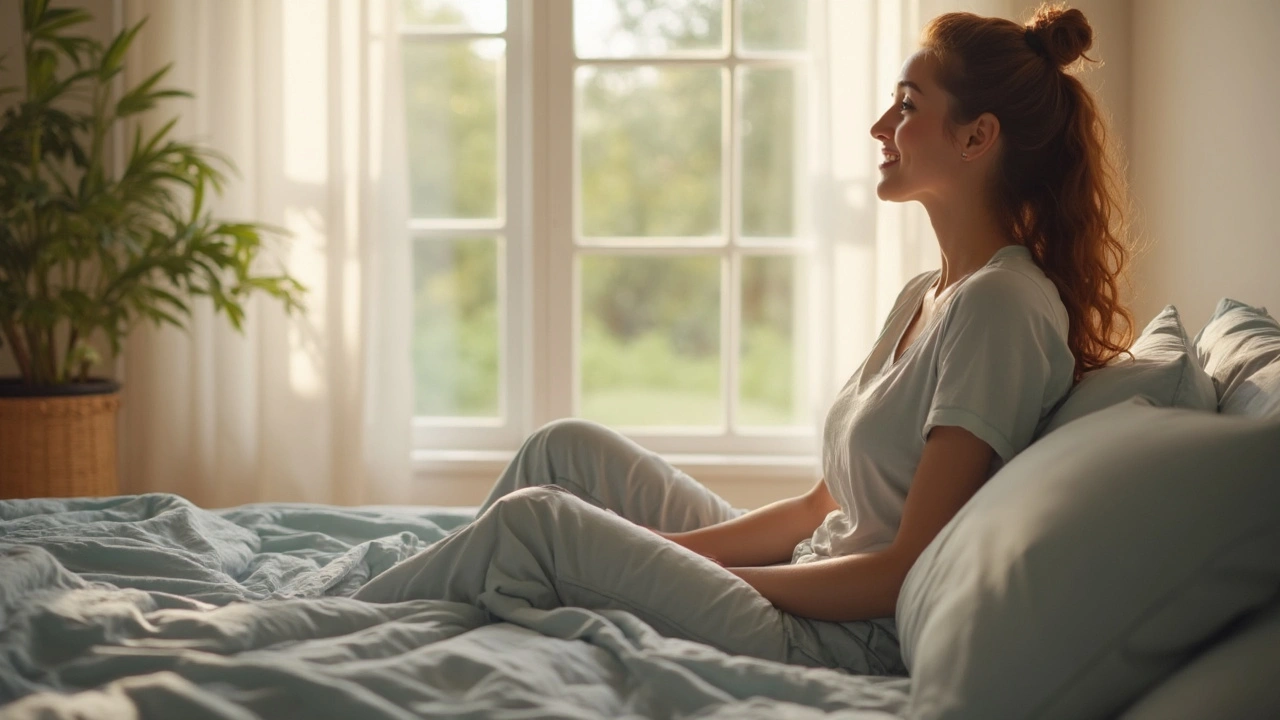Bedding for Night Sweats – Stay Cool and Dry Tonight
If you wake up drenched in sweat, the problem is probably your bedding. The good news? You can change it without buying a new mattress. Simple swaps like cooling sheets or a breathable mattress pad make a huge difference.
What Makes a Good Night‑Sweat Bedding?
First, look for fabrics that move moisture away from skin. Materials such as Tencel, bamboo, and performance polyester pull sweat to the surface and let it evaporate quickly. Cotton feels soft but can stay damp; blend cotton with synthetic fibers for better wicking.
The weave matters too. A percale or sateen weave leaves more air space than a tight twill, so heat escapes faster. Dark colors hide stains, while light shades reflect heat, keeping the surface cooler.
Weight is another clue. Light‑weight sheets won’t trap body heat like heavyweight flannel does. Aim for a thread count between 200 and 400 – high enough for comfort, low enough for airflow.
Top Picks You Can Buy Today
Cooling Sheets: Look for brands that advertise “cooling technology” or “temperature regulation.” A set of Tencel sheets usually costs about $80‑$120 and lasts several years with proper care.
Moisture‑Wicking Pillowcases: Switching just the pillowcase can cut night sweats in half. Bamboo pillowcases are soft, hypoallergenic, and pull moisture away fast. They’re typically sold for $15‑$30.
Breathable Mattress Pad: A thin, breathable pad adds a layer of protection without changing your mattress feel. Pads with gel or phase‑change material absorb heat and release it slowly. Prices range from $40 to $100.
Weighted Blankets (Lightweight Version): If you like the feeling of weight, choose a lightweight version made with cooling fibers. It provides comfort without adding extra warmth.
Don’t forget the basics: wash your bedding regularly in cold water and avoid fabric softeners—they can coat fibers and reduce breathability. Hang sheets to dry when possible; the sun helps kill bacteria that cause odor.
When you’re shopping online, read reviews for “sweat” or “hot flash.” Real users often mention how well a product performed in hot climates.
Finally, combine bedding changes with simple bedroom habits. Keep the room at 65‑70°F (18‑21°C), use a fan, and open windows if it’s cool outside. A portable air conditioner can help on humid nights.
By picking the right sheets, pillowcase, and mattress pad, you’ll wake up feeling dry and refreshed. You don’t need a pricey sleep system—just the right fabrics and a few smart habits. Try one change at a time to see what works best for your body.

Struggling with asthma and night sweats makes getting a good night's sleep a real mission. This guide breaks down the top hypoallergenic and moisture-wicking bedding choices that actually work, no matter the Brisbane climate. Discover why some fabrics help your airways and skin breathe easier, learn which materials to avoid, and pick up practical tips for creating a bedroom that truly supports healthy sleep. Whether you want cotton sheets, bamboo blends, or techy fabrics, you'll find what suits your sleep style right here. Get ready to wake refreshed.
Read more
